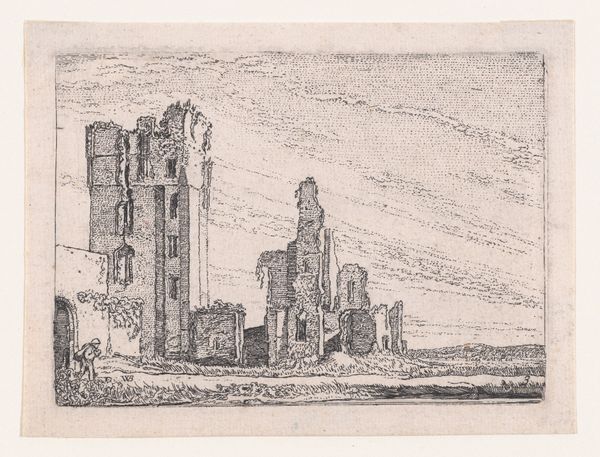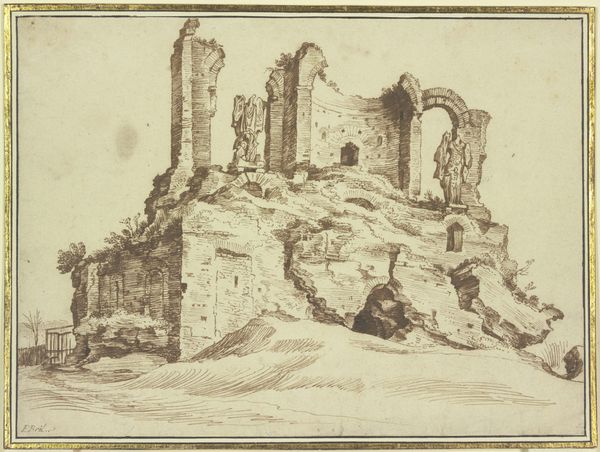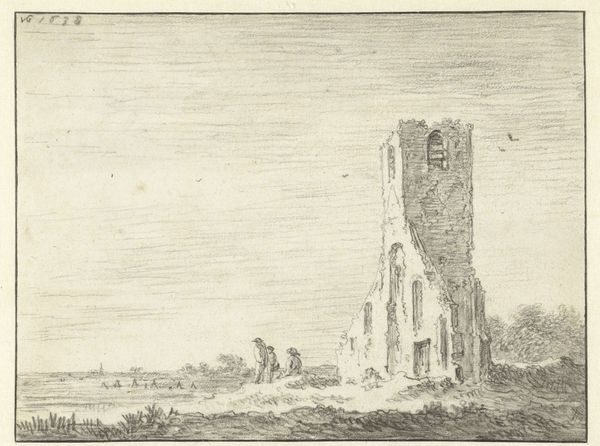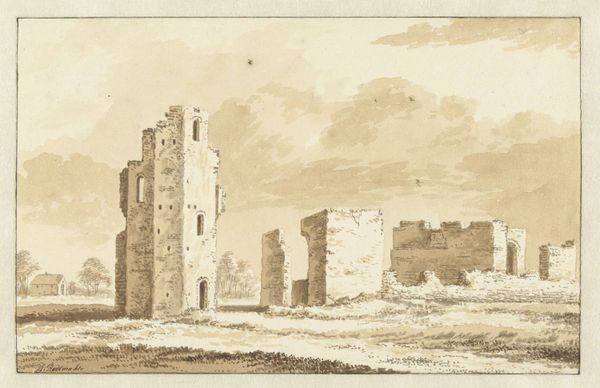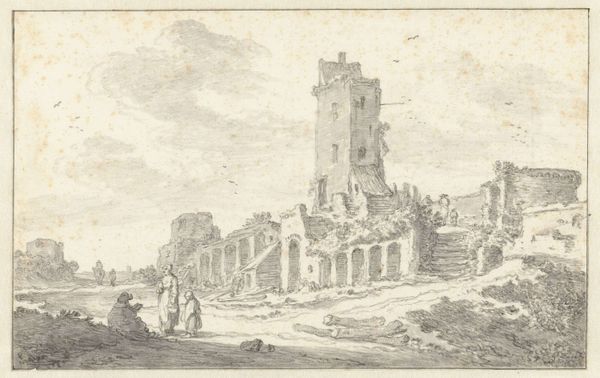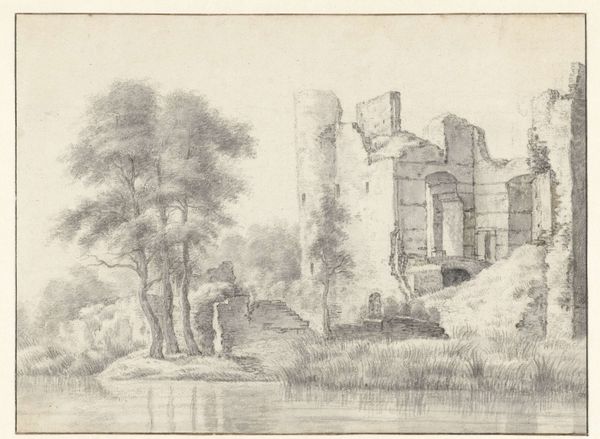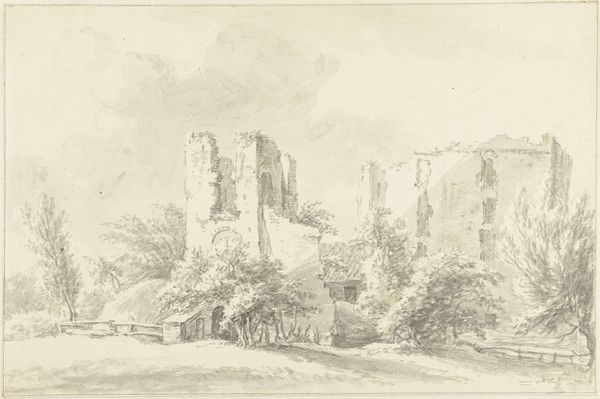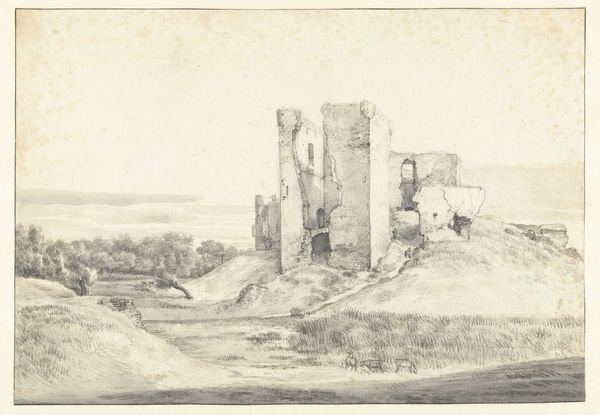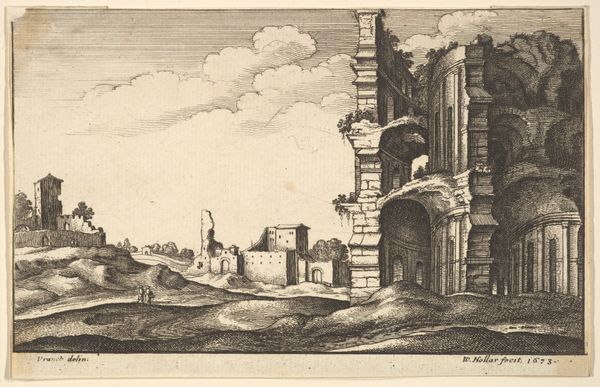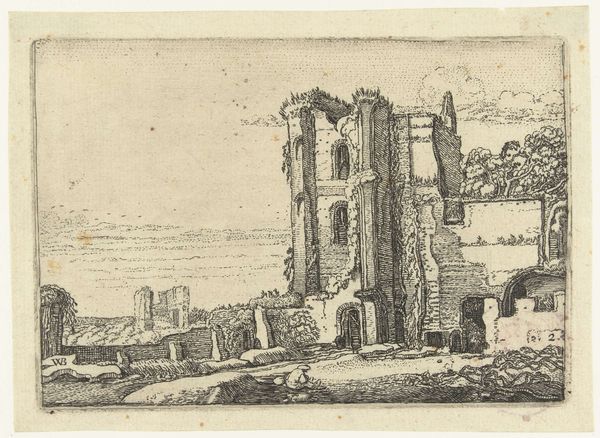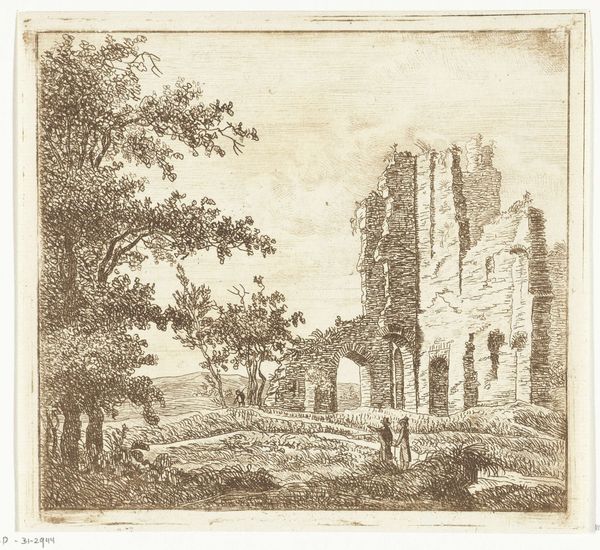
drawing, paper, ink
#
drawing
#
baroque
#
landscape
#
paper
#
ink
#
pen-ink sketch
#
cityscape
Dimensions: height 150 mm, width 239 mm
Copyright: Rijks Museum: Open Domain
Curator: So striking, isn't it? What comes to mind when you first see this drawing? Editor: Ruins, certainly, and a quiet melancholic beauty. Like looking at the skeleton of a memory, still standing proud despite the passage of time. Is it me, or does it almost whisper forgotten stories? Curator: It does evoke that sense of longing. This pen and ink sketch on paper is entitled "Ruïne van het huis te Kleef bij Haarlem," or "Ruins of the House at Kleef near Haarlem". It was rendered by Abraham Rademaker sometime between 1722 and 1733. Editor: Rademaker, you say. I'm immediately drawn to the subtle variations in tone. See how the lines vary, the light catching what's left. It has a sort of layered dreamlike quality. Do we know if that was Rademaker's intent? Curator: His approach blends a baroque sensibility with a passion for landscapes and topographical accuracy. Ruins were a very popular motif at the time. These aren't just depictions of decay; they stand as symbols of time's relentless power and humanity's fleeting presence, which the aristocracy may well have contemplated. Editor: Fleeting presence is the right phrase. It really emphasizes how impermanent everything is. You know, there's something about old stones that grounds me even while reminding me I'm not going to be around forever. Curator: Precisely! The composition emphasizes this. These ruins, reduced to shells, set against the vastness of the sky. It also speaks to resilience—of what lasts beyond us and how such fragments invite us to re-imagine what was. Editor: What's remarkable is how Rademaker achieves so much with so little. It's sparse yet deeply evocative. Curator: True, through meticulous details, the image resonates far beyond the literal depiction. These are not just remnants of architecture; they are prompts for introspective meditation on history, memory, and existence itself. Editor: I have to agree. Looking at it, I’m pulled in—imagining who walked these halls, the echoes of laughter, or maybe battles fought. Time does indeed leave its mark, turning everything into these beautiful whispers. Curator: Beautiful whispers—an ideal way to encapsulate Rademaker’s achievement here. Thank you for lending your thoughts! Editor: Thank you for your insights; it’s shifted my perspective. I feel ready for my next wander around the museum.
Comments
No comments
Be the first to comment and join the conversation on the ultimate creative platform.
